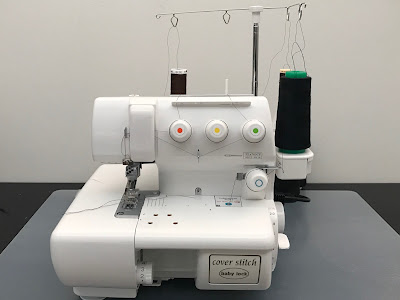I always wanted a
pink swimsuit. When I saw Pattern Review's Activewear Contest, I said, that’s it, it’s
time to make a swimsuit. I had NEVER made a
swimsuit before, and had zero idea of how difficult it could be. But the
optimistic me thought that there are so many online resources nowadays and I
could learn, so I took the plunge.
Finding the pattern, learning the skills, choosing fabric and supplies...
I started with
last year’s PR contest winner
treefrog’s Swimsuit. I really like the design
of that swimsuit. I tracked down the
seller (also the designer) of that pattern on Esty. I locked my eyes on this swimsuit pattern because: 1) the
underwired cups and lapel/turn-back are so eye catching 2) the design is quite unique and
modern without straight side seams. So I ordered the patterns all the way from the Netherlands.
As I was determined to
make this swimsuit, while waiting for the pattern, I started reading blogs
about bra making. I got a little bit of an idea what the components of my
bra were, but I was still so confused how to install the channelling and sewing
the cups.
Two weeks later, I
received the pattern in my letter box. I was excited to open the pattern but
soon disappointed and stressed after I found out the sewing instructions were
like the Burda Style Magazine type – concise, only words and NO ILLUSTRATIONS. I
read the instructions many times and I just couldn’t understand and visualise all
the steps and the materials.
I GOT STUCK.
I enrolled in the
course and it comes with a free pattern. I was surprised. This is the best money
I spent on an online sewing course ever! It’s so well presented and extremely
informational for a beginner like me.
By then I had met
with Georgina at
Sewsquirrel.com.au (also recommended by the ladies on
FB) She helped me with buying the supplies I need. She explained to me what power
net, bra foam and swimwear lining are in great details with the actual product.
Combined with the online workshop, I can imagine putting together my swimsuit.
The Remnant Warehouse has a great range of chlorine-resistant swimwear lycra. Most of the printed
ones come from
Jets Swimwear, a premium Australian swimwear brand. I
ordered the
Making it… Muslin #1 Sophie Swimsuit
Initially I only
planned to just watch the videos for the bits that I needed for my swimsuit
project. I ended up watching the whole course and made a sample of the Sophie
Swimsuit. Heather, the presenter, is such a well-spoken and hands-on teacher.
She really inspired me to give it a go with her Sophie Swimsuit.
 |
| Sophie Swimsuit.... First swimsuit I ever made. |
This is the first
swimsuit I made. It’s not too bad. There are a few things I can improve on if I
make the pattern again (I think I will). But, for now, I learnt some important
tips:
1.
Use a walking foot for Lycra. I didn’t know until I
watched Heather’s video. It makes a huge difference.
2.
Use straight stitch to sew the cups and use a serger to sew the other
seams.
3.
Use clear elastic to stabilise the top edge of the cup
(more details below).
4.
The long arrows on swimsuit patterns are actually
stretch lines. You need to find the more stretchy direction of the fabric, which can
be lengthwise, or crosswise depend on the fabric, and align the pattern pieces along
the stretch line.
Finally making it… Muslin #2 my swimsuit
After practising
sewing a swimsuit with Sophie (above), I still wanted to make a muslin of my
swimsuit to check the fitting, and practise again.
Luckily I made this
muslin, I found a couple of areas I need to improve such as the cups. As you can see in the photo below:
Finally Really Making it… the Real Swimsuit
Yay, I am finally
cutting the fabulous fabric for my swimsuit.
Apart from the
fitting changes mentioned above, I also make some changes on the construction:
1.
I added a power net to line the upper cup (see the photo below)
2.
I added a
swimwear lining to the front body piece and the shoulder
straps because the printed fabric is thinner than the plain one.
So it’s done
I would really
like to wear it to the beach and take some photos, but I only finished it today and
I need to post it up for PR’s activewear contest. However, I will
put up some photos once I have a chance to go to the beach.
Conclusion
The past month is
such a steep learning curve for me. I really enjoy the whole learning
experience, although sometimes it’s a bit stressful with a deadline at the back
of my mind. Like making my wedding gown from zero knowledge a few years ago,
this is such fun learning a whole new skill and it’s really encouraging for me
to take on any project in the future. I am looking forward to starting making
my own bras.
Happy sewing.
 |
| Cloud is such a good companion |
























































